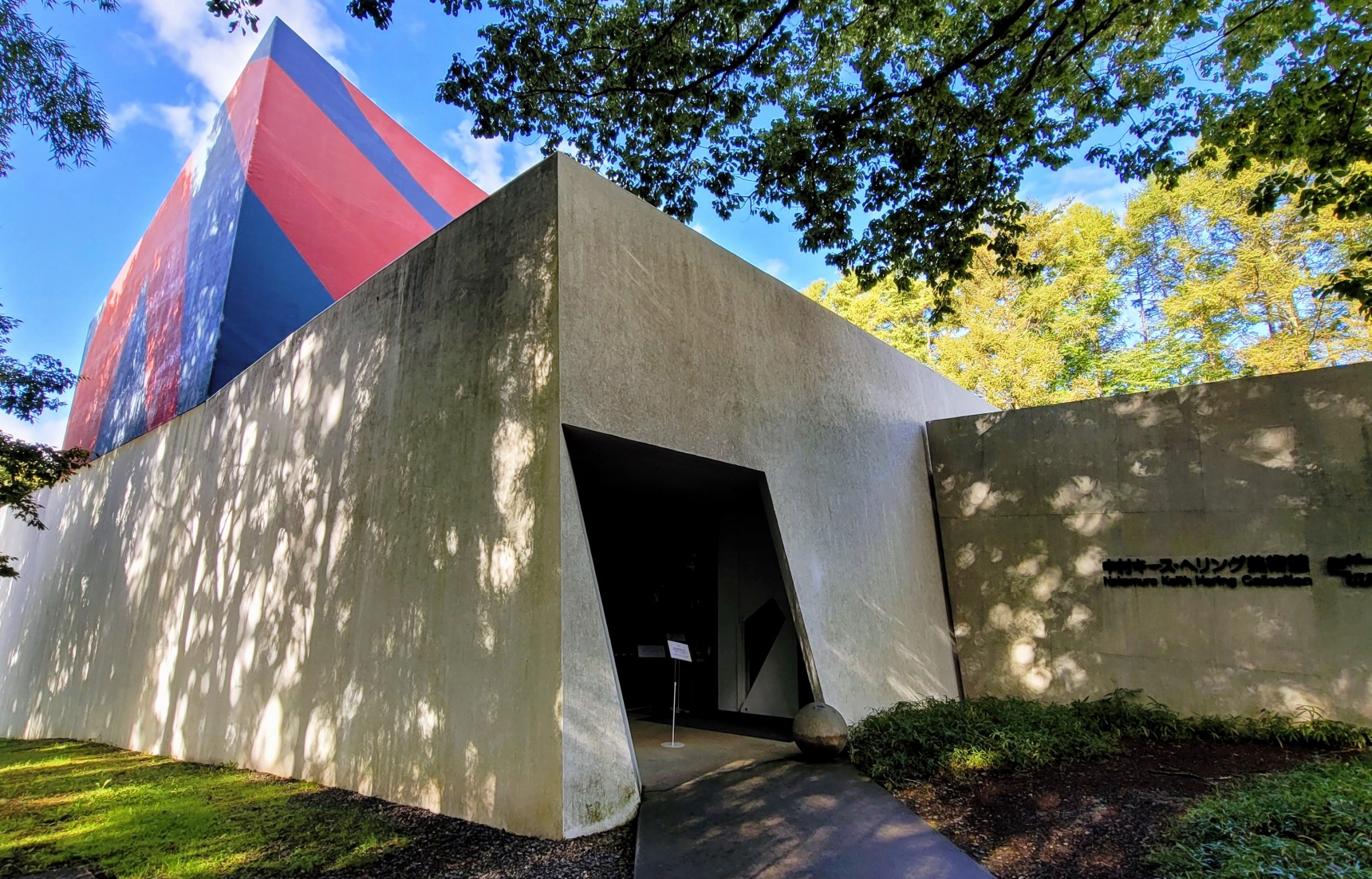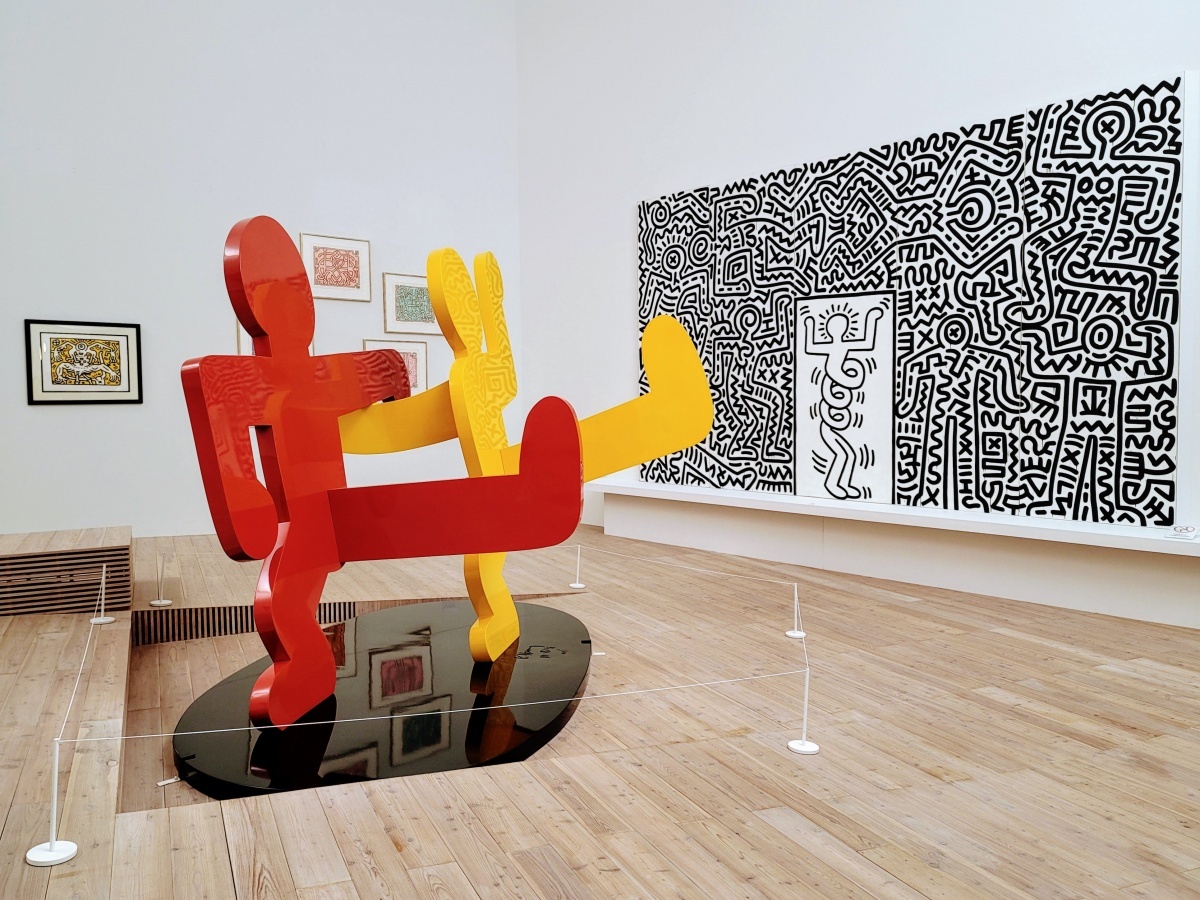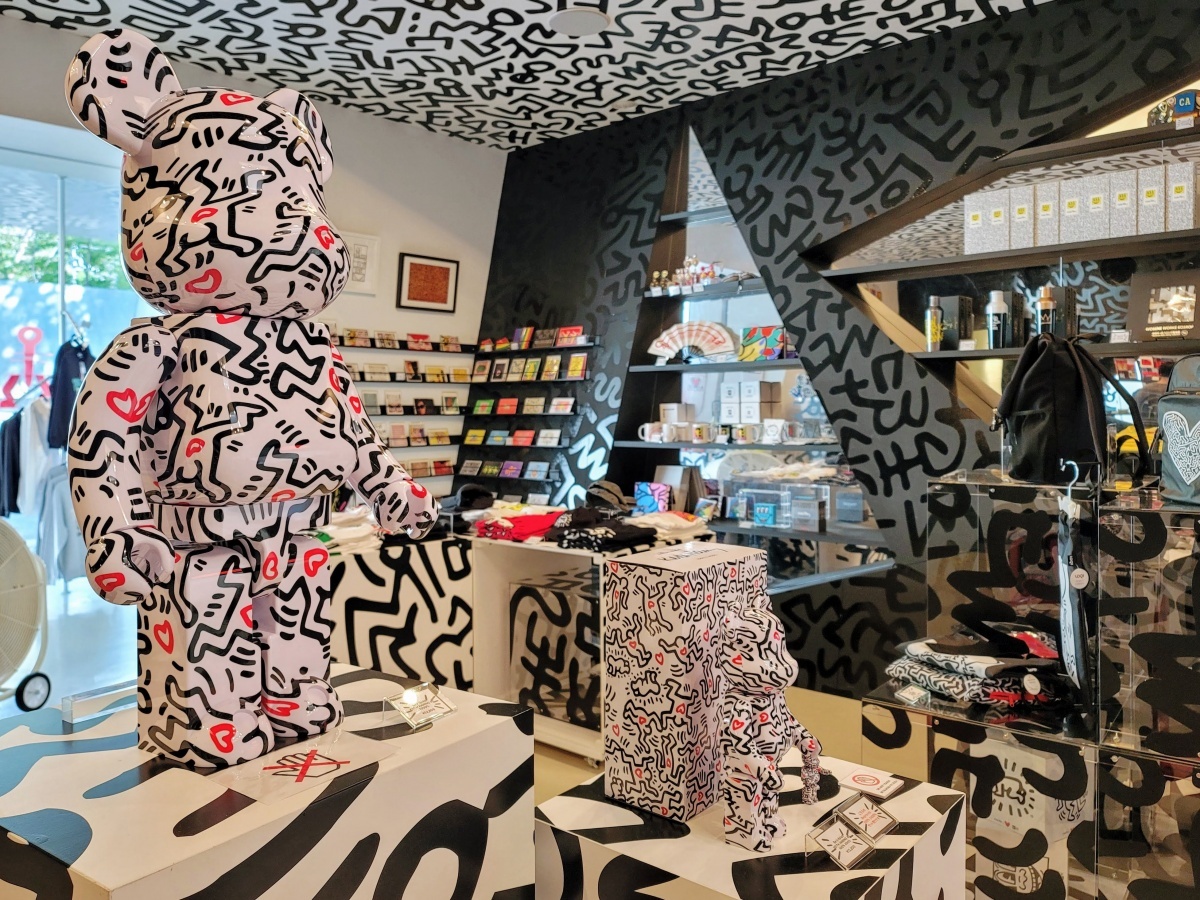A Visit to Japan's Keith Haring Collection

Keith Haring's work remains cool, relevant and timeless. Where often that claim is hyperbole or exhibition marketing, in the case of Haring, it's true... and there's no better place to experience his work than at the Nakamura Keith Haring Collection.
By Mac Salman
The Nakamura Keith Haring Collection opened in 2007, surrounded by a serene forest in the foothills of the Yatsugatake Mountains. It was founded by Dr Kazuo Nakamura, the CEO of CMIC holdings, who started collecting the works of Keith Haring in 1987 following a trip to New York in which he encountered the artist's work. His collection now comprises some 300 works from Haring, and the museum is the only one in the world to primarily focus on the work of Keith Haring.
The building itself is an award-winning architectural masterpiece designed by Atsushi Kitagawara. It's been bestowed with the Togo Murano Prize, the Japan Art Academy Prize, the Japan Institute of Architects Award and the Yamanashi Cultural Prize of Architecture. Bold colours, sharp angles and curved lines evoke the strength and power found within the forces of nature and the vitality that runs through Haring's art. These combine to create an atmospheric space that creates a dialogue with the museum's collection, which aims to cover the entire scope of Haring's work.
Upon entering the museum, the visitor heads down the narrow 'slope to darkness'. The configuration of these spaces intends to express the darkness and light that marked both Keith's life and the times in which he lived. The spatial concept of 'from darkness to hope' is evident in the names of the galleries you'll be visiting - the Room of Darkness, the Gallery of Growing, and the Room of Hope.
"He achieved international acclaim, working with icons such as Andy Warhol, Madonna, and Vivienne Westwood."

Keith Haring, born in 1958, died at the age of 31. Despite his short life, his body of work is voluminous, and he's one of the defining American artists of the 80s. He created a unique, instantly recognizable style that broke down barriers between high and low art. Through his work, Haring shared his ideals and high hopes for humanity, such as breaking free from the shackles of society and the beauty of freedom and equality.
Haring held his first solo gallery exhibition in 1981 and contributed to the New York downtown art scene by curating shows in clubs and theatres. Using the Subway Billboards of 80s era New York as the canvas for his work, he soon achieved international acclaim, working with icons such as Andy Warhol, Madonna, and Vivienne Westwood. Despite the apparent simplicity of his abstract and figurative motifs, his work can be interpreted in many different ways. That's why his art appeals to this day: it's timeless.
"His work tackled the issues of his day: economic recession, capitalism, politics, racial discrimination, LGBTQ visibility, homophobia, drug addiction, AIDS, and environmental destruction."

He died in New York City in February 1990 of AIDS-related complications — one of the many victims of the HIV pandemic raging at the time. He was diagnosed with HIV a few years before his death and was very open about his situation, becoming a spokesperson for his generation and challenging societal perception. His work tackled the issues of his day: economic recession, capitalism, politics, racial discrimination, LGBTQ visibility, homophobia, drug addiction, AIDS, and environmental destruction. The museum embraces this philosophy, with a sign by the door asking you not to enter if you have symptoms of racism, homophobia, xenophobia, misogyny and transphobia.
With many works packed together, the museum gives you an excellent opportunity to explore the narrative running through Haring’s art and his signature motifs. The crawling baby is arguably Haring's most recognizable creation, which he drew across his entire career. He felt the baby best represented the concept of innocence. Dogs, UFOs and block figures which evoke breakdancing also feature.

Haring looked at the world from many different angles, such as his deep understanding of art history and fascination with technology and his exploration of multiple mediums. You experience that as you work your way through the museum. Besides paintings, the collection includes furniture, metalwork, sculpture and even a motorbike.
The museum runs rotating special exhibitions, tying many of Haring's works around a theme. The museum also hosts regular events, continuing Haring's passion for education and philanthropy.
The Pop Shop
carries an excellent selection of Haring-inspired merchandise for you to splurge on, including a great selection of T-shirts, underwear (!), Bearbricks and much more.
Online collection
If you can't make it to the museum, you can still enjoy the collection. The museum's online collection features 160 items to enjoy from the comfort of your own home for free.
https://artsandculture.google.com/entity/nakamura-keith-haring-collection/g11c5zxptkc?categoryid=place
How to get there
The closest station to the Nakamura Keith Haring Collection is Kobuchizawa, about 2 hours from JR Shinjuku Station on the Chuo Line Express. It's then 8 minutes by car from the station to the museum.
The website:
https://www.nakamura-haring.com/en/visit/



